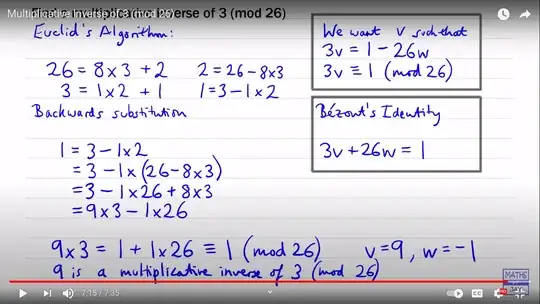I am learning about the Euclidean algorithm, and here is an image with the workings.
I got stuck towards the end.
My friend tried to help me, saying just put the three together. I understand that on the second line the equation is rearranged, however I do not understand how we got to the third line:
3 - 1*26 + 8*3
= 3 + 8*3 - 1*26
= (1+8)*3 - 1*26
In the image, I can see that v = 9 because of the 3v where 9 * 3. However, I do not understand why w = -1 when on the last line 9*3 = 1+1 * 26 has no negative numbers?
